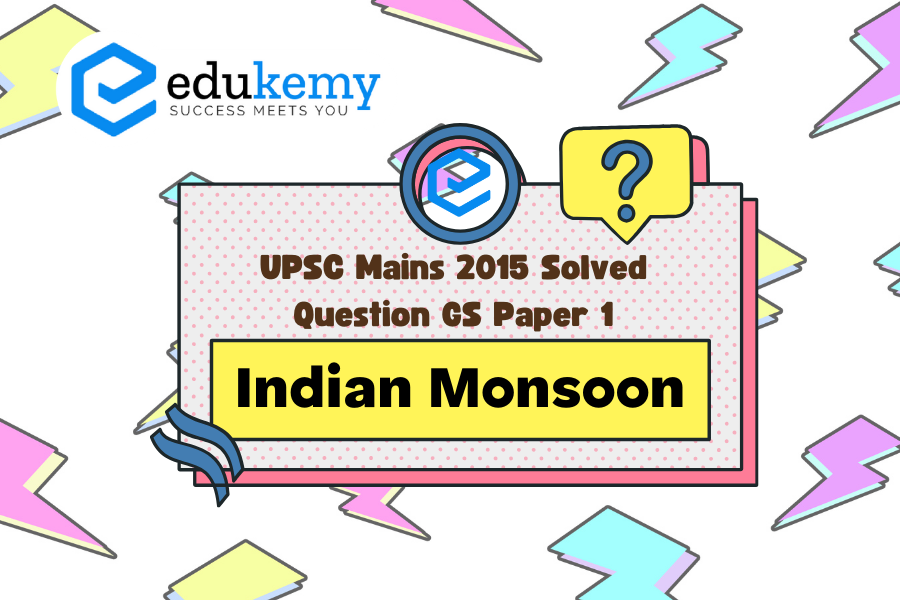
The behavior of the Indian monsoon, a crucial climatic phenomenon, has been a subject of increasing concern and scrutiny in recent years. Scholars and environmental experts alike have engaged in a discourse on the extent to which human activities have influenced and altered the traditional patterns of this seasonal weather system. The Indian subcontinent has witnessed significant changes in its landscape due to rapid urbanization, deforestation, and alterations in land use patterns, all driven by human activities. This essay seeks to explore the intricate relationship between the changing behavior of the Indian monsoon and the anthropogenic modifications to the landscape. While some argue that these alterations have led to observable shifts in the monsoonal patterns, others contend that natural variability remains a dominant factor. By delving into the various dimensions of this complex interplay, this discussion aims to assess the degree to which humanizing the landscape has contributed to the changing behavior of the Indian monsoon, ultimately offering insights into the implications of these changes on the region’s climate and ecosystems.
Tag: Effect of urbanization.
Contents
Decoding the Question:
- In the Introduction, begin your answer with how monsoonal fluctuations and its impact.
- In Body, discuss the anthropogenic causes that may affect the monsoon pattern. You may cite some recent issues.
- Conclude your answer by giving some recent developments and a way forward.
Answer:
Humanizing the landscape can be defined as changing the natural landscape architecture as per requirement of human beings like Urbanization or Industrialization. All these make disturbances in the hydrological cycle of the atmosphere either reducing or increasing the rate of evaporation and ultimately cause a change in the pattern of Indian Monsoon.

The monsoon season lasts three months, from June to September. More than 70% of the total rainfall falls in these months. Monsoons are of particular strategic importance to India because of its agriculture sector. While irrigation systems have been expanding since independence, 60% of crops remain rain-fed, and are hence entirely dependent on the monsoon season.
Humanizing the landscape:
a) Devastation of Wetlands: A wetland is a land area that is saturated with water either permanently or seasonally. Wetlands play a number of roles in the environment, principally water purification, flood control, carbon sink and shoreline stability. Devastation of wetlands in urban areas such as lakes or ponds is one of major reasons for irregular rain patterns in big cities like Chennai or Srinagar.
b) Deforestation: Large scale deforestation for the purpose of Urbanization and Industrialization is the cause of increase in Carbon Dioxide (CO2) or GHG in the environment (as per estimate, 1/5th of global GHG emissions are the result of deforestation and forest degradation).
c) Concrete Use: Large use of concrete in urban areas causes poor recharging of groundwater and changes the hydrological cycle of the environment which ultimately disturbs the Monsoon system of India.
d) Agriculture: Large scale use of chemicals and bore well irrigation in agriculture are other examples of humanizing the landscape.
e) Creation of large dams in hilly areas which have changed the ecological flow of rivers is also an example of humanizing the landscape.
A recent study of the Intergovernmental Panel on Climate Change (IPCC) (IPCC, 2001) revealed that under several greenhouse gas and sulfate aerosol forcing scenarios of monsoon precipitation, heavy rainfall events exhibit a rising trend in frequency and magnitude over the last 50 years. Air pollution and reduced precipitation caused by climate change results in a reduction of agriculture production in India.
In case you still have your doubts, contact us on 9811333901.
For UPSC Prelims Resources, Click here
For Daily Updates and Study Material:
Join our Telegram Channel – Edukemy for IAS
- 1. Learn through Videos – here
- 2. Be Exam Ready by Practicing Daily MCQs – here
- 3. Daily Newsletter – Get all your Current Affairs Covered – here
- 4. Mains Answer Writing Practice – here

